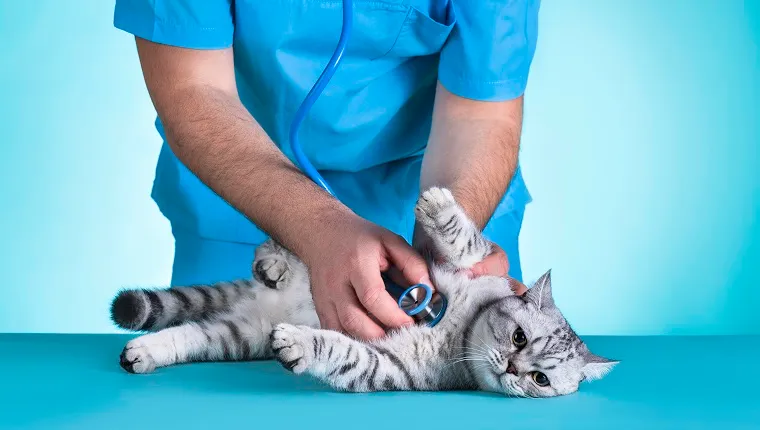There are a few scenarios where cat owners often find themselves in need of surrendering their beloved pet. One such circumstance is the development of pet allergies. Many people adopt cats without realizing they have a mild sensitivity that worsens over time.
While measures such as specialized diets, regular grooming, and occasional medication can help manage minor allergic reactions, severe cases may necessitate Rehome a Cat for the owner’s health and quality of life.
Another triggering situation is a significant lifestyle change leaving an owner lacking sufficient time to properly care for their cat. Most domestic cats their on receiving one-on-one attention and interactive play for at least 30 minutes per day.
Without this level of engagement, cats can become depressed or act out by scratching furniture. If relocating for school or a job, having a new baby, or simply being too busy means a cat’s needs are no longer being adequately met, it’s in the animal’s best interest to find a home with an owner capable of greater dedication.
Moving to a new residence is another catalyst for rehoming. Rental properties and roommates don’t always permit pets. Extended family members may be allergic or simply unwilling to live with a cat.
Landlords may have strict “no pets” policies as well. While boarding a cat temporarily is an option, sustained instability is unfair to impose. Surrendering ownership allows finding a permanent placement before or immediately after relocating.
Behavioral issues sometimes necessitate rehoming, too. Issues like aggression towards other pets, property destruction, or refusing to use the litter box may indicate an underlying stress or incompatibility with the current environment.
Behaviorists can treat many problems, but some cats simply do not thrive in multiact or multi-pet households. Finding a single-pet family gives such cats a fresh start.
On sad occasions, financial hardship or life disruptions like unemployment, medical emergencies, separation, or divorce arise making continued cat ownership unsustainable.
While surrendering is always a final resort, neglecting an animal’s needs due to poverty helps no one. In such difficult scenarios, rehoming allows finding a stable home better equipped to provide long-term care.
Preparing Your Cat Medically and Emotionally
Taking the time to get your cat in optimal condition psychologically and physically dramatically increases rehoming success. First, schedule a comprehensive vet exam including any routine or overdue vaccinations.
Thorough checks prove to potential adopters the cat received consistent preventative care and likely has many healthy, happy years ahead. Next, consider spaying or neutering unaltered cats, as this reduces stress related behaviors, litterbox issues, and risks of roaming once in a new home.
Gradually transitioning to less solo interactions helps cats adapt to less devoted attention typical of busier multi-person households or shelters. Start by leaving your cat alone for progressively longer intervals using treat dispensing toys as a distraction.
Provide affection during scheduled play sessions instead of constant petting to avoid separation anxiety later. With one month’s notice, cats can usually adjust emotionally for rehoming.
Be sure to collect any medical history for your cat such as vaccinations, surgeries, chronic conditions, allergy medications or dietary needs clearly documented for the new owner. Pack favorite toys and bedding scented with familiar smells to ease tension. A carrier or cage acclimated to in advance also makes vet trips less traumatic. Proper preparation sets cats up for a calm start in their new chapter.
Exploring Common Rehome a Cat Options
To embark on finding a new home, explore these common surrender routes:
Post on Social Media and Community Sites
Facebook local buy/sell groups and pet specific pages offer a generous pool of potential adopters. Write an engaging profile highlighting your cat’s charming qualities like playfulness or affection levels. Include clear photos emphasizing your pet’s personality. Facebook contacts or neighborhood apps like Next-door connect you directly to potential adopters nearby too.
Submit to Local Shelters and Rescue Organizations
Shelters thoroughly evaluate cats for health, temperament and adoptability suitability before housing them up for adoption. Rescue groups pull shelter cats at risk but have limited space, necessitating temporary foster homes.
By working with knowledgeable staff, you gain the advantage of screened applicants better prepared to give long-term love. Be aware there may be small nominal fees to cover basics like spay/neuter if the cat isn’t already altered.
Post to Large Breed Specific or Regional Rehoming Sites
Websites like Pathfinder increase exposure beyond local boundaries. When outlining needs and availability, be concise yet complete. Highlight trainable tendencies, gentle demeanor on walks or around children to attract families. Provide diligent medical histories for rescues assisting special cases. Periodic profile reviewing helps maintain visibility too.
Ask Veterinary Offices to Post Notices
Vet clinics staying updated on your cat’s surrender status may suggest your pet to clients inquiring about adoption or looking for a companion for their existing pet. Some practices keep business cards or profiles of available animals at the front desk for potential owners browsing in the waiting room too. Ask about bulletin boards or social media features. Every extra sharing effort expands reach.
Carefully Screening Applicants
Once contact from interested adopters begins, screening thoroughly becomes paramount. I always recommend multiple shorter visits at my home to observe cat human interactions neutrally.
A single rushed meeting cannot convey subtle details like energy levels, stress cues, or quirks. While some are just window shopping, others truly connect. I trust my instincts evaluating demeanor and body language on both sides. Does my cat seem relaxed or aloof?
Specific questions help select conscientious forever homes. Discuss housing specifics to ensure stability and confirm other pets suitably introduced. Income status reassures veterinary costs won’t deter care. Work schedules must synchronize well. Landlord approval of cats, as renters require. References, even a home check by the adopting group prove commitment. Thorough screening finds the absolutely right home, not just an convenient placing.
Facilitating a Smooth Transition
To reduce rehoming trauma despite preparation, gradual introductions aid adjustment. Recommend visiting a few hours on weekends increasing slowly to overnights then living there. Provide favorite supplies reducing confusion from change. Exchanging contact specifics let you reassure the cat through calls at first. Even offering occasional visits comforts, though most transition well with patience. Proper support systems empower confident starts.
While difficult, rehoming done conscientiously keeps cats thriving. By sincerely screening dedicated forever people focused on your pet’s wellbeing and commitment, cats find understanding families. Take comfort knowing you acted preventatively rather than reacting to neglect. With planning and care, surrendering opens doors versus closing them, so all live happily ever after.
Key Takeaways
- Prepare cats medically and socially to reassure adopters
- Expose them through various surrender avenues widely
- Carefully examine potential adopters in-depth
- Facilitate gradual introductions minimizing stress
- Rehoming smartly keeps cats healthy and people safe
By following proven practices, you empower giving your cat another loving home better able to provide lifelong devotion if your situation changes. While sad initially, surrender handled well means they never stop being loved and cared for as family. Your cat will thrive with a compatible match, having you to thank for finding it.
Conclusion
Rehoming a cat is difficult but necessary in some situations. It is important to carefully screen potential adopters to find the best new home. Provide all medical records and give time for a gradual introduction. Stay in touch after the transition to ensure the cat is adjusting well. With patience and care for the cat’s welfare, rehoming can be successfully accomplished to the benefit of both the cat and its original owner.
FAQs
Q:Do cats do well when rehomed?
A: Rehoming is inevitably confusing and stressful for most cats no matter how well things go
Q:Where can I put my cat if I don’t want it anymore?
A:Check with the animal shelter, rescue or breeder where you got your pet
Q:Do cats cry when rehomed?
A:Cats meow continuously when trying to settle into a new environment

Hi. My Name is Alexander Bell. I am a professional content writer since 2006.
18+ years of experience crafting compelling and authoritative content for diverse audiences.
🖋️ Specialize in formal article writing, combining meticulous research with engaging storytelling.
📚 Proven track record of delivering high-quality content across various industries, including technology, finance, and healthcare.
💡 Skilled in SEO best practices and optimizing content for digital platforms to maximize reach and engagement.
🔍 Strong research capabilities, adept at distilling complex information into accessible, informative articles.
🎓 BA in English Literature










